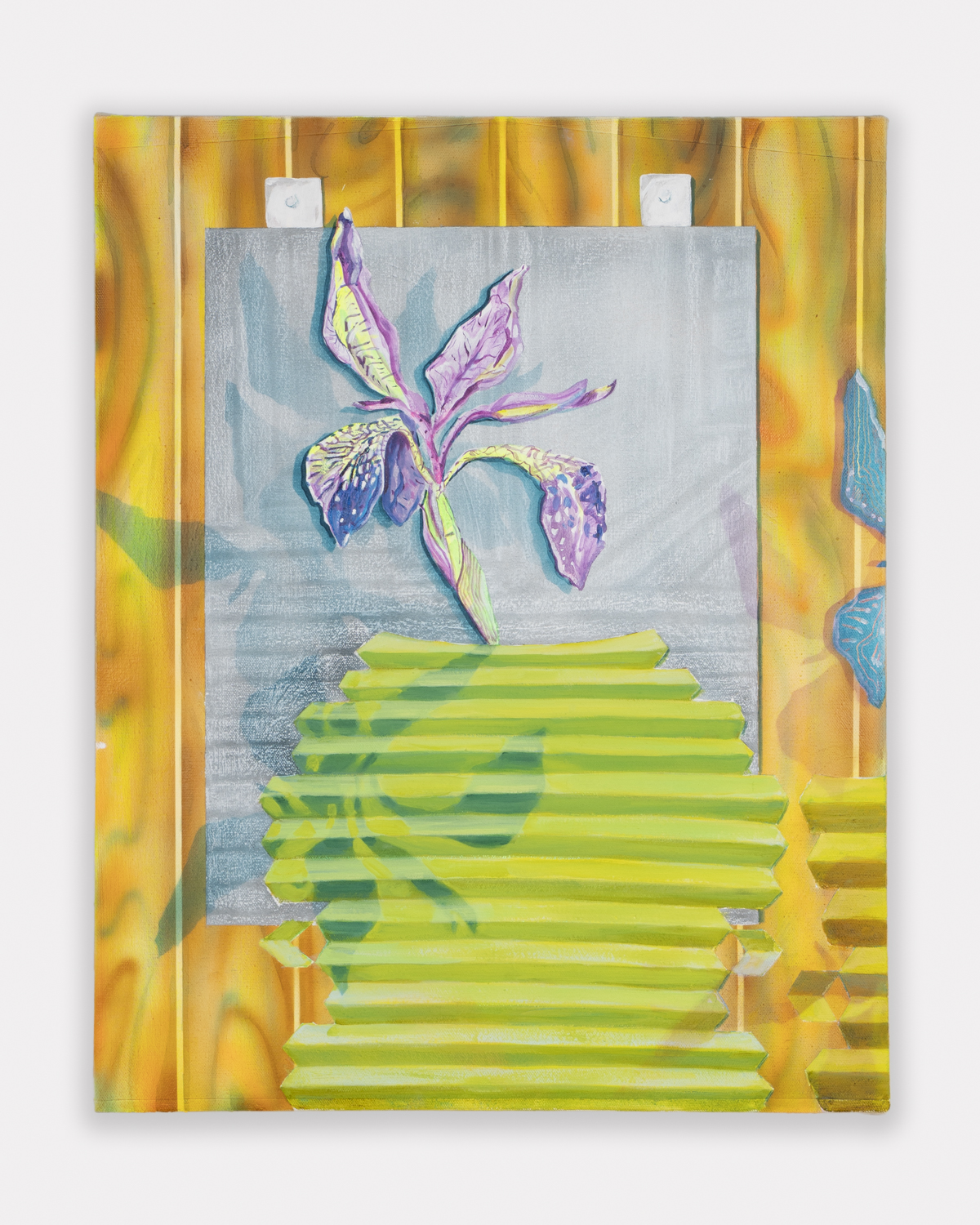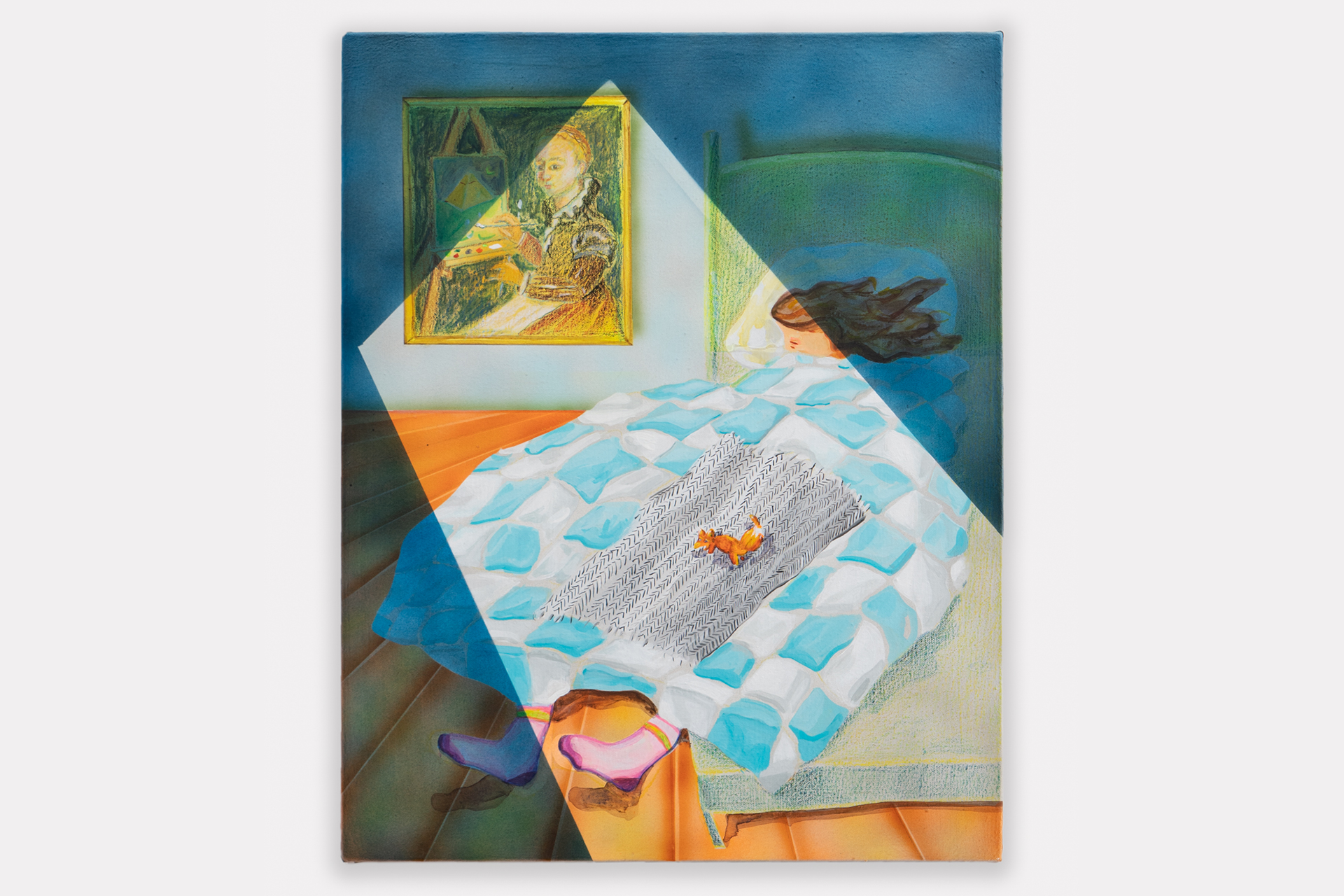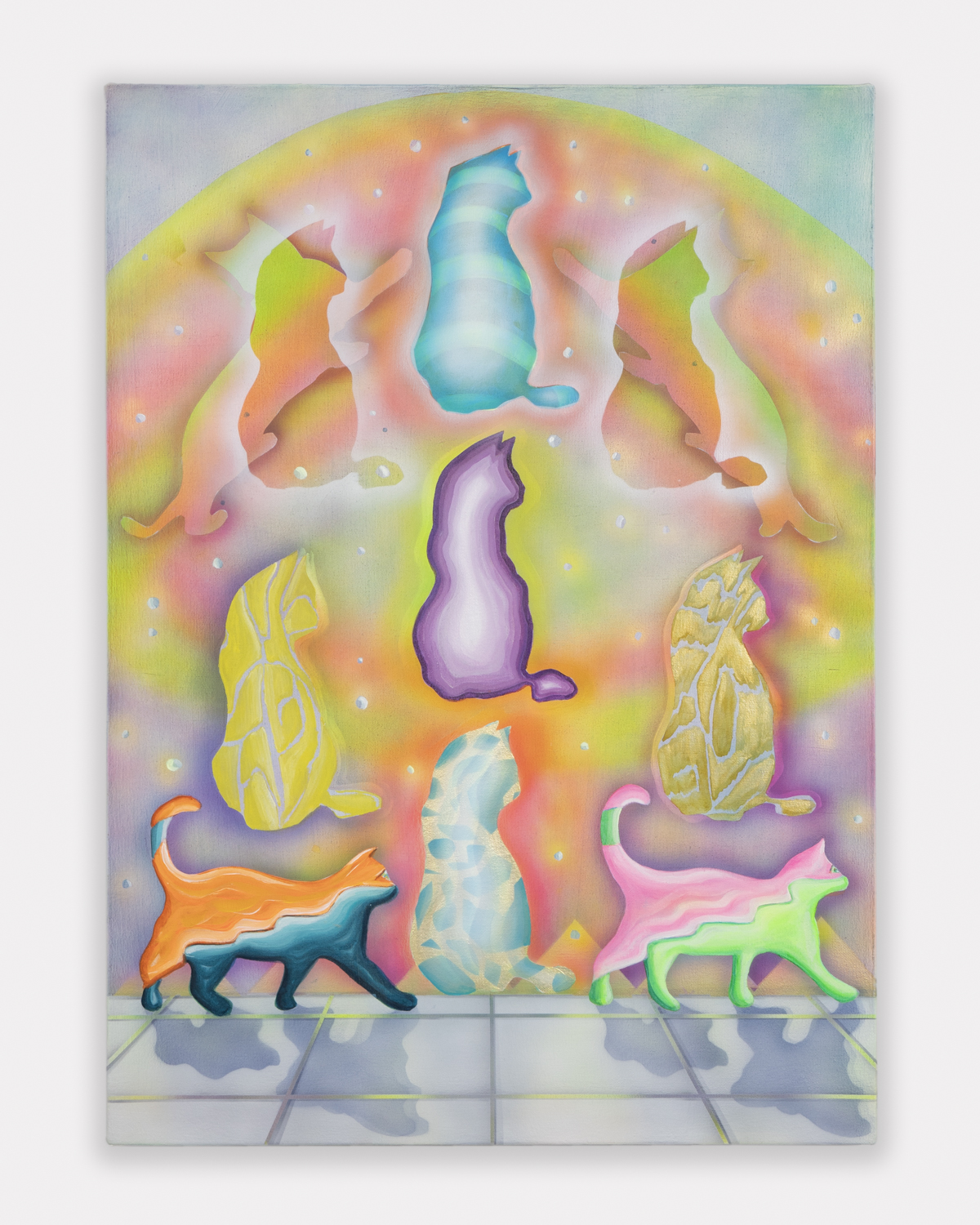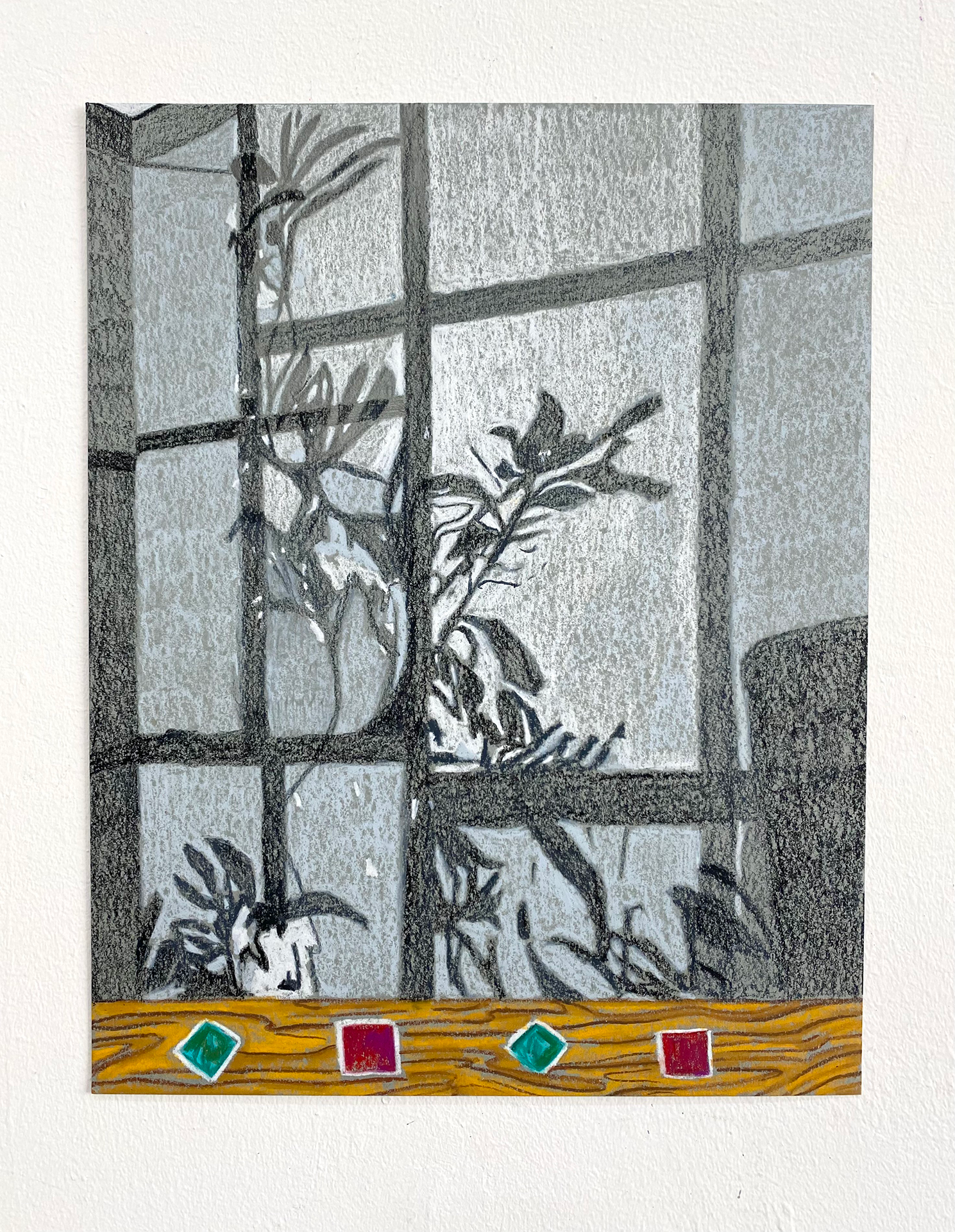
For Iris (2023), 16" x 20". image / provided

Dreaming for Sofonisba (2022), 16" x 20". image / provided
When viewing Brooklyn-based artist Catherine Haggarty's recent paintings and works on paper, there's a visceral experience of light, whether it's sunshine casting a shadow across a wooden floor or moonlight bathing a sleeping body. In some pieces, it even seems to be radiating from the subject itself.
It's an element that can be traced back through her earlier work, though the language clearly morphs through the passing years. Haggarty will be exploring this dialogue during her artist talk, "Past and Present Self," on March 14 in Milstein Auditorium at 5:15 p.m. An experienced mentor and teacher in addition to her art making, she has been sharing her experience and insights with AAP's M.F.A. students as the spring 2024 Teiger Mentor in the Arts. In advance of her public lecture, she offered her perspective on collaboration, critique, and the contagious excitement of making.
I really loved speaking with EJ Hauser, last fall's Teiger Mentor, about how the tools and media they were attracted to shaped the life in the work, perhaps on par with how a musician might be drawn to express musical ideas through a particular instrument, lending a timbre and character to what is being expressed. This stood out to me again when looking at your work, particularly in terms of how it captures light, so I wondered if we might begin there by speaking a bit about your relationship to your media of choice — how it began and how it's evolved.
I wasn't trained formally as a painter, so my relationship to media has always been a little bit scrappy, and even a little bit feral. I have been making drawings and paintings through the lens of a drawing hand for a long time. Only in 2017, 2018, did I start to experiment with airbrush as a medium to layer color in a different way and that really helped me open up ideas of light and of surface and of transparencies. An airbrush gun can do really sensitive, beautiful lines, but then it can also mask and softly lay over color with a really smooth surface and with a sort of nuance that fits my temperament. I think about light from within a painting and I think about color as a really layered and nuanced collaboration with drawing.

For Iris (2023), 16" x 20". image / provided
You said it fits your temperament. Would you share a little bit more about that connection?
The idea of a material fitting a temperament for me means that it suits the way that my brain works in relation to ideas as opposed to feeling like it's a medium I have to control and that I have to master. I like that some materials I work with can work with me — in a collaborative way — in a sort of call and response. An airbrush gun and the dry media I use allow me to move, stop, push forward, go back. It has a flexibility my life needs and my thinking in the studio needs, as opposed to sitting down, making a huge palette of colors, committing to those, and applying with a brush. That has a different pace to it, and I like that pace occasionally, but it's just not usually the way that my time or energy works.
You mentioned having a drawing hand, and I saw in a video about your process the importance of sketching for you. What's the conversation like between that quick work and the paintings and drawings that are more formally produced?
The practice of drawing is both preparatory and final for me, meaning that I think a drawing is enough, but I think a drawing is also part of the process in which I apply pigment and layer. The way I see form and shape and possibilities is through sketching. It reminds me of what I pay attention to. It allows for a really beautiful, tenuous understanding of form and figure foreground relationships. Drawing for me is communication and touch in a primal and even automatic way.
I was really interested to see how some of your work appears in other work as you move through your portfolio. Is there an overarching throughline that you're working toward in your practice, or is it more made up of individual, self-contained statements?
There's not one broad thing, but they're usually self-referential at the beginning. Then the challenge is how to connect it through time and space with other people and other experiences. I think the possibility of art being great is when it can collaborate with a larger cultural framework of reference and honor other elements that have passed before. I'm interested in a nonlinear progression in my studio, and I often collaborate with a former self and my old ideas, so I try to keep an open mind about the bodies of work that I make. I typically make work in two- to three-year cycles, just trying to get the most out of a framework of ideas, and then I usually morph into a new iteration whether I like it or not.

Cat Transfiguration (2023), 33" x 24". image / provided

For Jersey (2023), 20" x 28". image / provided
As this semester's Teiger Mentor in the Arts, you're working closely with AAP's graduate students, and I know you have quite a bit of teaching experience including The Canopy Program which you founded. What observations or guidance or even questions do you find yourself sharing with students or those you're mentoring in these contexts?
The M.F.A. students at Cornell are really wonderful. It's an intimate group, and I find myself saying frankly very similar things that I say to the adults and post-college artists that I work with in my Canopy program. However, there are also different inquiries and that's a really exciting challenge. As much as we talk about art and formal solutions, most of the things I find us talking about, or in general, myself talking about, are issues of the psychological or of permission or of flexibility in thinking and in the studio. So in that way, mentoring and teaching are not always about adding colors or asking people to improve technique. It is almost always about understanding how they can improve their voice or their vision — and by improve, I mean, allow in or change or be flexible with their ideas to make the kind of exciting work that neither they nor I could predict or assign.
Why has this mentorship and teaching role become such an integral piece of your work, do you think?
I have had mentors in my life who helped me believe I could be an artist, and I'm most interested in helping other people understand the pathways. So it's a wonderful job, but it's also a way to cultivate a culture much broader than myself, and more important. The reality of the art world is that most people work, and that's not a bad thing. If I'm going to work, I'm going to do what I really want to do. Good teaching is reciprocal and generous, and I think it leads to a really wonderful life. As long as I'm asked to do it or can do it, I think I'll probably do it.

Study for Night (2022). image / provided
Do you find that those experiences and those conversations then come back into your studio with you, and maybe influence your practice in any particular way?
It's wonderful and refreshing to see people who are like, "I just made this, and I don't have the language for it." It's a nice reminder about the impulsivity and the aliveness of art. The energy that you can glean from people who are just so excited to be making their own work can then help you feel really excited about making yourself. It's important to come through as a maker to your students. They want help, but they want to see you excited about your work and your ideas. My ability to help in any way comes from a maker's perspective most often, in which I can empathize greatly with what they are going through. I am an artist.
You'll be delivering an artist talk on March 14 titled "Past and Present Self." What can we expect from that evening?
"Past and Present Self" will be a talk about work I have made over ten years. I'm interested in using this talk as a teaching tool for people to understand that artists who are thinking about past ideas and current ideas all at the same time are doing something exciting. Most artists are trying to figure out their past ideas in relation to their new techniques or new processes, so past and future self is just talking about the work in the present tense, but referring to the arc of ten years of making and really specific bodies of work that have a connection. Maybe the talk will even teach me something about what happens next — future tense.

Invisible & Flying (2021), 48" x 36". image / provided
You mentioned that you work cyclically in two- to three-year periods. What tends to push you into the next period?
I can never predict what will spur a change or where it will go, but looking back I can say that my shifts happen because of external life events that I react to. Perhaps it is a trip to the ancient caves that inspired a body of work from 2019 to 2021. This trip inspired me to make work more abstractly and referencing glyphs and animals. In this series, I purposely rejected a linear perspective and a figure foreground relationship. I embraced a more floating world relying on a different kind of relationship to space. Instead of light from a specific source, I was interested in internally glowing from the canvas which was gleaned from the glistening cave light I saw in the south of France. The imprint of animals, their feet and patterns, peppered the work, and the way I let in language was formed through a sort of fluid partial automatism where I would follow marks instead of dictate them.
In 2021, I flew to the University of Oregon to do a lecture, and I don't love flying so I was drawing to shift my attention. I gave myself a prompt to draw from an aerial perspective my home back in Brooklyn from memory. I pushed myself to just draw with specificity in mind. This was something I had been avoiding for years for various reasons. On that plane ride, I gave myself a habit-breaking prompt which I give students often. Although I loved the previous body of work, I began to desire a way to insert my direct daily experience into it. I had just been married and moved to a new apartment, so I simply began by delineating a figure foreground relationship and built a new framework around the interior space of my home.
I think I began to believe my paintings could be highly personal and also in conversation with other aspects of the world and art history. This opened up my experience in my studio — into my home, my thoughts, and my life again. I felt and feel ready to be fully open — for better or worse, that is how I am going to navigate my time.